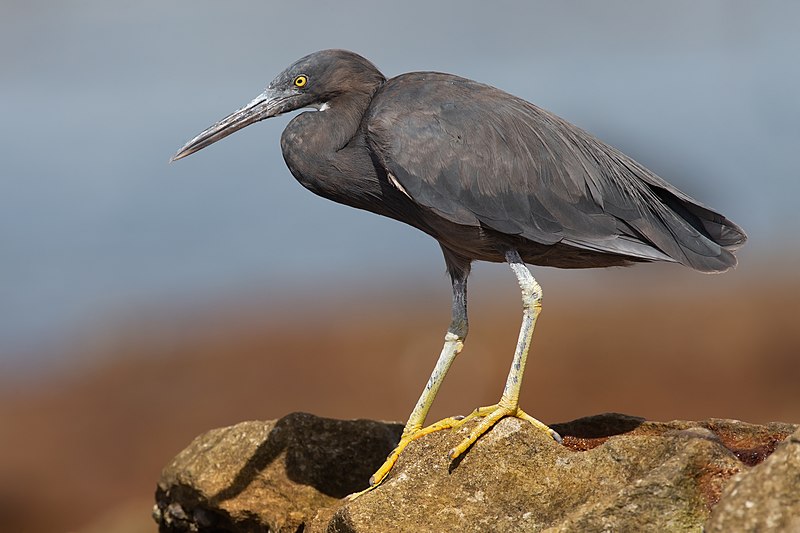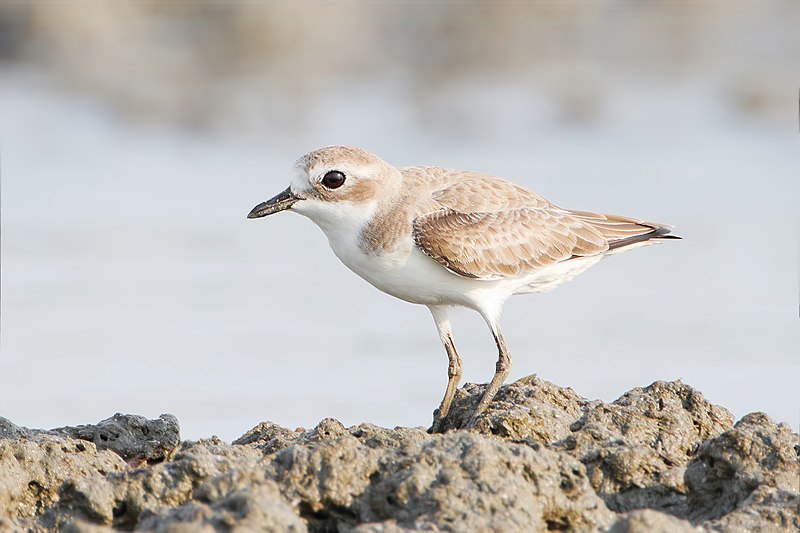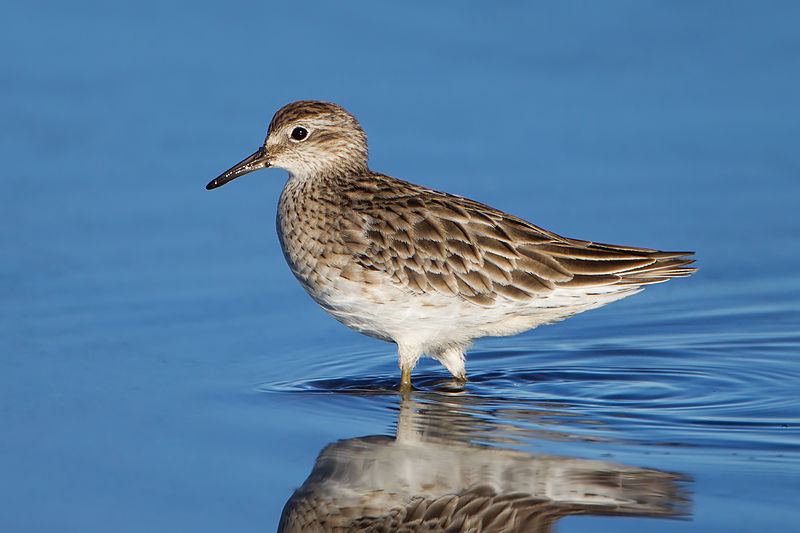Nauru, a small island country in the Pacific Ocean, is home to many unique and beautiful bird species. Despite being just 21 square kilometers in area, Nauru offers a diverse range of habitats for these avian creatures, including lush forests, lagoons, and coral reefs.
The island’s geographic isolation and lack of predators have contributed to the evolution of a distinct range of bird species over time. The island’s endemic birds have fascinated wildlife enthusiasts and birdwatchers for generations.
With its extraordinary birdlife, Nauru is an exciting destination for anyone interested in birds and nature.
In this article, we will delve deeper into Nauru’s fascinating bird species, their characteristics, and their habitat.
11 Common Republic Of Nauru Birds
If you are a bird lover, you might be interested in learning more about the common birds of Nauru, a small island nation in the Pacific Ocean. Nauru has a rich and diverse avian fauna, with 34 species recorded, including one endemic and two introduced.
We will introduce you to 11 birds, their characteristics, and their habitats.
1. Pacific Reef Heron

The Pacific reef heron is a species of heron found throughout Southern Asia and Oceania. It has two distinct color morphs, one with slaty grey plumage and the other entirely white.
This bird is easily identifiable by its long legs and yellow bill, used to forage in shallow water bodies.
The sexes look alike except for minor differences such as size or body shape.
They feed on small fish, amphibians, crustaceans, and mollusks that they find near reefs or mangroves where they roost during day hours, often preening their feathers if predators like hawks or eagles disturb them.
When breeding season arrives, these birds become more vocal, using loud honking calls to attract mates before settling down into nests built among trees around wetlands or coastal areas.
Scientific classification:
| Kingdom | Animalia |
| Phylum | Chordata |
| Class | Aves |
| Order | Pelecaniformes |
| Family | Ardeidae |
| Genus | Egretta |
| Species | E. sacra |
Also Featured In Birds of the Philippines, Birds that Charles Darwin Studied
2. Procellariidae
Procellariidae is a diverse family of seabirds belonging to the bird order Procellariiformes.
These birds are called tubenoses and include fulmarine petrels, gadfly petrels, diving petrels, prions, and shearwaters.
They range in size from the tiny storm petrel, which measures around 18cm long, to the giant albatross, which can reach up to 3 meters long.
Depending on species, it is generally found near oceans or coasts where they feed on fish, squid, id, and other marine life.
Many procellariids will also nest inland during the breeding season before returning out to sea for most of their lives.
Their wings have specially adapted feathers that give them incredible gliding abilities, allowing them to fly with minimal effort over vast distances across oceanic regions
Scientific classification:
| Kingdom | Animalia |
| Phylum | Chordata |
| Class | Aves |
| Order | Procellariiformes |
| Family | Procellariidae Leach, 1820 |
Also Featured In Most Common Birds in France, Birds You’ll Find in the Sea
3. Lesser Sand Plover

The Lesser Sand Plover is a small wader bird belonging to the plover family. It has yellowish-brown upperparts and white underparts, with a distinct black band across its chest and whitish forehead.
Its short but powerful wings allow it to cover large distances for food, such as insects, worms, or crustaceans found on muddy beaches or shallow lagoons near coasts.
The species prefers habitats with low vegetation, like sandy deserts, coastal dunes, and salt flats, where they can hide among the sand grains while foraging for food during their migrations between Africa and Asia.
These birds form monogamous pairs that breed annually in springtime; nests consist of scrapes lined with pebbles or shells carefully arranged by both parents, who will vigorously defend them against predators until chicks fledge after about four weeks from hatching.
Scientific classification:
| Kingdom | Animalia |
| Phylum | Chordata |
| Class | Aves |
| Order | Charadriiformes |
| Family | Charadriidae |
| Genus | Charadrius |
| Species | C. Mongols |
Also Featured In: Kyrgyzstan Birds, Asian Birds
4. Red-Tailed Tropicbird
The Red-tailed Tropicbird is an exotic seabird found in tropical areas of the Indian and Pacific Oceans. Its striking appearance is primarily white feathers and a black mask covering its eyes.
Its bright red bill makes it stand out against its pale plumage. Both males and females have similar looks to one another – unlike many other bird species where the male looks significantly different from the female.
As described by Pieter Boddaert in 1783, this impressive bird can be seen soaring through tropical skies, looking for food alone or within small flocks made up of several individuals at once.
Scientific classification:
| Kingdom | Animalia |
| Phylum | Chordata |
| Class | Aves |
| Order | Phaethontiformes |
| Family | Phaethontidae |
| Genus | Phaethon |
| Species | P. rubricauda |
Also Featured In Mauritius Birds, Birds that Live in the Ocean
5. Collared Petrel
The Collared Petrel is a species of seabird belonging to the Procellariidae family. It can be found in Fiji, where it breeds on Gau Island and possibly other islands, potentially breeding in Vanuatu, Cook Islands, and Solomon Islands.
Its plumage predominantly consists of greyish-brown coloring with white underparts and a collar around its neck; this gives them their name ‘Collared’ petrels.
They are known to migrate over long distances out at sea during winter months before returning home for the summer season when they breed between August – April.
These birds feed primarily upon squid but also take small fish from surface waters or deeper depths, depending on availability/seasonality.
Although not endangered, conservation efforts must continue to protect these beautiful birds in our environment.
Scientific classification:
| Kingdom | Animalia |
| Phylum | Chordata |
| Class | Aves |
| Order | Procellariiformes |
| Family | Procellariidae |
| Genus | Pterodroma |
| Species | P. brevipes |
Also Featured In Fiji Birds,
6. Micronesian Imperial Pigeon
The Micronesian imperial pigeon is a bird species found in Palau, the Caroline Islands, the Marshall Islands, and Nauru.
It has various habitats, such as montane forests, secondary forests, beach-side forests, and mangroves.
Unfortunately, hunting and deforestation due to human activities threaten this beautiful creature. The IUCN has assessed it with “Near Threatened” status for its conservation priority levels.
This large bird can be seen flying around during dusk or dawn in search of food, like fruits from trees close by their habitat locations.
If we can protect its natural environment, this magnificent species will continue living peacefully without any disturbances while appreciating nature’s beauty.
Scientific classification:
| Kingdom | Animalia |
| Phylum | Chordata |
| Class | Aves |
| Order | Columbiformes |
| Family | Columbidae |
| Genus | Ducula |
| Species | D. oceanic |
Also Featured In Micronesia birds,
7. Black-Naped Tern
The beautiful Black-naped Tern is a seabird found in tropical and subtropical areas of the Pacific and Indian Oceans.
These terns measure around 30 cm long, with a 21 to 23 cm wing span, black beaks and legs, yellow bill tips, long forked tails, and white faces.
The breast has grayish-white feathers that extend down its back – forming an elegant nape, hence their name.
They are rarely seen inland but can stay close to coastal waters or even venture further depending on seasonal changes.
Their diet consists mainly of fish they hunt from above by hovering before plunging into the sea at high speed after prey. They also feed on crustaceans sometimes too.
These birds have an exciting lifestyle; they are incredibly graceful when airborne yet ferocious underwater hunters, making them quite a sight.
Scientific classification:
| Kingdom | Animalia |
| Phylum | Chordata |
| Class | Aves |
| Order | Charadriiformes |
| Family | Laridae |
| Genus | Sterna |
| Species | S. sumatrana |
Also Featured In Maldives birds, Common Birds of Lombok
8. Pacific Long-Tailed Cuckoo
The Pacific long-tailed cuckoo is a species of bird from the Cuculidae family. It is found only in New Zealand, where it breeds during spring and summer before migrating to various Pacific islands for its winter season.
This bird has many names, such as sparrow hawk, home owl, screeched, or koekoeā in Māori.
The most distinctive feature of this species is their elongated tails, which can measure up to 16 cm long.
They are also brood parasites, meaning they will lay eggs in other birds’ nests and then rely on them to raise their young without any parental help from themselves.
Despite these traits, however, they still make beautiful additions to our avian population with their melodious calls that echo through the forests each morning and night.
Scientific classification:
| Kingdom | Animalia |
| Phylum | Chordata |
| Class | Aves |
| Order | Cuculiformes |
| Family | Cuculidae |
| Genus | Urodynamic Vigors & Horsfield, 1826 |
| Species | U. triteness |
Also Featured In: Kiribati Birds,
9. Black Noddy
The Black Noddy bird is a medium-sized member of the Laridae family, identifiable by its black plumage and white cap.
It closely resembles the Lesser Noddy but has slightly darker feathers with dark lores instead of pale ones.
The species was first formally described in 1758, although it was previously considered part of Anous tenuirostris before being identified as a separate species.
They are usually found near tropical oceans or islands where they forage for food, such as crustaceans, mollusks, and insects during the day.
They roost on trees or shrubs close to shorelines at night while avoiding larger predators like sea eagles.
During the breeding season, females lay single eggs, which both parents protect until hatching occurs around four weeks later.
Scientific classification:
| Kingdom | Animalia |
| Phylum | Chordata |
| Class | Aves |
| Order | Charadriiformes |
| Family | Laridae |
| Genus | Anous |
| Species | A. minutes |
Also Featured In Cook Islands Birds, Birds You’ll Find in the Marshall Islands
10. Grey-Tailed Tattler
The Grey-tailed Tattler is a small shorebird belonging to the genus Tringa. It has an unmistakable noisy call, which gives it its name.
These birds are found in coastal areas of Siberia and Polynesia, as well as some other places around Asia and Australia.
They have mottled grey plumage with darker wings, white bellies, and long yellow legs; they also have distinctive black stripes on their necks that run down onto their chests.
The grey-tailed tiger feeds mainly on aquatic insects or worms at low tide but sometimes takes seeds from plants when available.
During the breeding season, these birds nest near water bodies such as rivers or creeks in shallow depressions lined with leaves made by both parents, who then share incubation duties for about three weeks until the eggs hatch.
After this time, males and females help raise young chicks before they fowled within about 30 days of hatching.
Scientific classification:
| Kingdom | Animalia |
| Phylum | Chordata |
| Class | Aves |
| Order | Charadriiformes |
| Family | Scolopacidae |
| Genus | Tringa |
| Species | T. brevipes |
Also Featured In: Birds You’ll Find in Hokkaido, Birds of Hyōgo
11. Sharp-Tailed Sandpiper

The Sharp-tailed sandpiper is a small wader bird that may belong to the Philomachus genus as P. acuminatus.
This would place it with the Ruff bird. However, it would also need to make room for the Broad-billed sandpiper.
This bird is unique among calidrid species, but it is uncertain whether it will be merged into the Philomachus genus along with the Sharp-tailed sandpiper.
Scientific classification:
| Kingdom | Animalia |
| Phylum | Chordata |
| Class | Aves |
| Order | Charadriiformes |
| Family | Scolopacidae |
| Genus | Calidris |
| Species | C. acuminate |
Also Featured In White Birds Commonly Found in Hawaii, Most Common Birds Live in Osaka
Conclusion
Despite its small size and limited land area, the Republic of Nauru boasts a diverse avian population. Among the 11 common bird species on the island are representatives from various families, including seabirds, land birds, and migratory species.
These birds play crucial ecological roles, contributing to pollination, seed dispersal, and pest control. Furthermore, they enrich the island’s natural beauty and offer opportunities for birdwatching, ecotourism, and scientific research.
Protecting and conserving Nauru’s birdlife is essential for maintaining the island’s biodiversity and ensuring a sustainable future for its avian and human residents.